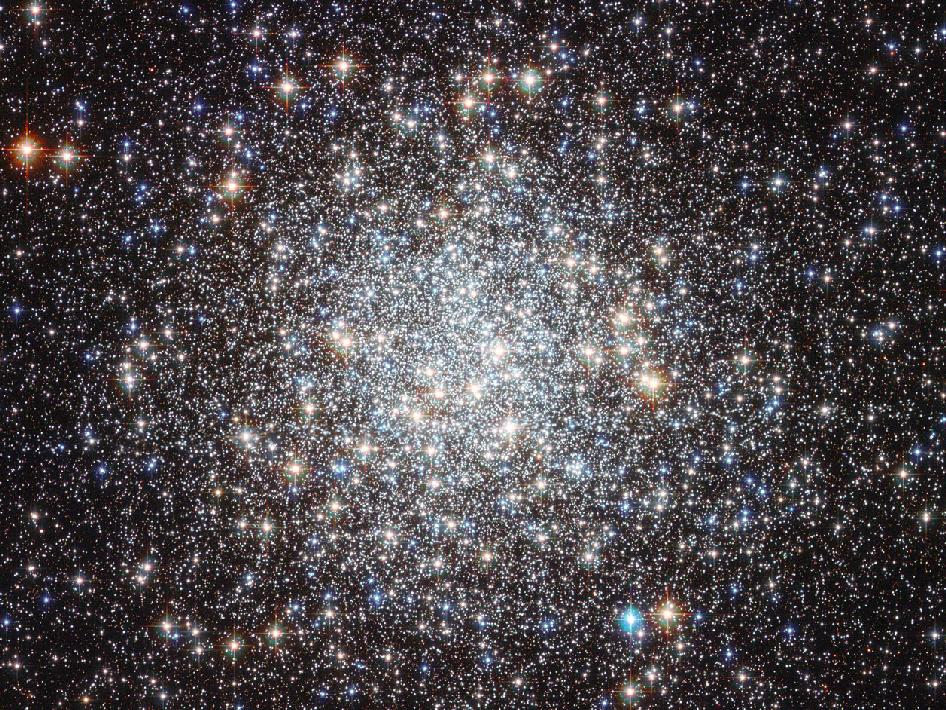 Hubble Sees Glittering Jewels of Messier 9
Hubble Sees Glittering Jewels of Messier 9
The Hubble Space Telescope has produced the most detailed image so far of Messier 9, a globular star cluster located close to the center of the galaxy. This ball of stars is too faint to see with the naked eye, yet Hubble can see over 250,000 individual stars shining in it.
Messier 9, pictured here, is a globular cluster, a roughly spherical swarm of stars that lies around 25,000 light-years from Earth, near the center of the Milky Way, so close that the gravitational forces from the galactic center pull it slightly out of shape.
Globular clusters are thought to harbor some of the oldest stars in our galaxy, born when the universe was just a small fraction of its current age. As well as being far older than the sun -- around twice its age -- the stars of Messier 9 also have a markedly different composition, and are enriched with far fewer heavier elements than the sun.
In particular, the elements crucial to life on Earth, like oxygen and carbon, and the iron that makes up our planet's core, are very scarce in Messier 9 and clusters like it. This is because the universe's heavier elements were gradually formed in the cores of stars, and in supernova explosions. When the stars of Messier 9 formed, there were far smaller quantities of these elements in existence.
As well as showing the individual stars, Hubble's image clearly shows the different colors of the stars. A star's color is directly related to its temperature -- counter-intuitively, perhaps, the redder it is, the cooler it is; and the bluer it is, the hotter. The wide range of stellar temperatures here is clearly displayed by the broad palette of colors visible in this image.
Image Credit: NASA and ESA
